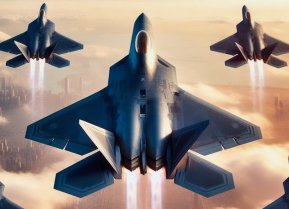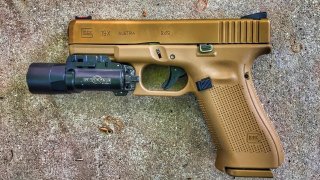Price and Performance: Why 9mm Outshines .38 Special for Shooters
In a nutshell, both cartridges work similarly: they can both be considered older designs, they were both developed primarily for use in handguns, they use practically the same diameter bullets which punch holes that are pretty much the same size, and they’re both popular and available all over the world despite their age.
Summary: The debate between revolver cartridges like the .38 Special and semi-auto handgun cartridges such as the 9mm is often considered pointless by enthusiasts due to their distinct differences. However, due to popular demand, a comparison reveals that while both have their merits in history and ballistic performance, the 9mm surpasses the .38 Special in terms of power, capacity, price, and versatility. Modern bullet designs and load data make both cartridges viable for self-defense, but the 9mm's lower cost and adaptability across various firearms platforms give it a significant edge. Despite personal preferences, the 9mm is acknowledged as the superior choice in this comparison.
Truth be told I tend to shy away from comparing any revolver cartridge to any semi-auto handgun cartridge. It’s an apples-to-oranges type of comparison — there’s no practical reason for it, so ultimately, it’s pointless. And I’m also a wheelgun guy so I’m a little biased toward revolver cartridges.
But having written a few handgun caliber comparison articles in the past, from time to time I would get emails from some of our readers asking me to do such a comparison. I would always tell them to just look somewhere else to satisfy their caliber-wars curiosity because I couldn’t care less about these types of comparisons. I’d rather avoid opening a can of worms — these types of comparisons lead to debates that can get ugly real fast.
Recently, a good friend of mine purchased a Ruger LCRx chambered for the 9mm. After trying it out in the range, he brought it to me and asked me to shoot a few rounds and tell me what I think about it.
I shot two cylinders’ worth (10 rounds) of standard pressure 147-grain Armscor brand ammo in it. After putting it through its paces, I told him that for a small-frame polymer revolver, it’s a great option for concealed carry and for the price he paid, it’s not bad — which shouldn’t come as a surprise as it is a Ruger-brand firearm.
Consequently, after shooting his LCRx and giving him my thoughts on his new acquisition, I got all excited and decided to revisit the topic of .38 Special vs. 9mm, a subject of countless debates in many online gun forums.
WHY EVEN BOTHER COMPARING THE TWO?
In a nutshell, both cartridges work similarly: they can both be considered older designs, they were both developed primarily for use in handguns, they use practically the same diameter bullets which punch holes that are pretty much the same size, and they’re both popular and available all over the world despite their age.
Where they differ greatly is in the ballistic performance area. A lot of firearms enthusiasts, including some self-confessed “gun experts”, quite often compare them on this area alone without regard for their merits and disadvantages.
It’s a no-brainer that as far as ballistics, the 9mm is superior. For 9mm fans and subcompact semi-auto plastic handgun aficionados, that’s pretty much all there is to this particular caliber comparison. The 9mm is more powerful, and semi-auto handguns have more rounds in the mag compared to revolvers, so it’s better than the .38 Special — no contest, end of the debate.
But if we all look deeper and think outside of the box, besides the numbers on ballistics charts accessible everywhere online, there’s more to this caliber comparison than most people would care to talk on, much less think about.
So in this round of our series of Handgun Caliber Showdowns, we’ll compare the .38 Special and the 9mm to try and determine which one is better, and just what makes it better over its contender.
A BIT OF HISTORY FOR THE UNINFORMED
People often compare these two handgun calibers because of all the similarities mentioned above. But if we’re doing a really objective, unbiased comparison (as biased as I am toward revolver cartridges I’d really want to make this comparison unbiased), we must look into each of these cartridge’s history a little.
The .38 Special was developed in 1898 as an improvement over the .38 Long Colt, a much weaker standard military issue revolver cartridge that proved too weak and inadequate against the Moro Juramentados — the badass, faith-blinded adrenaline-overdosed Muslim warriors American soldiers had trouble taking down during the Philippine-American War.
Those days, the use of smokeless powder as bullet propellant was only starting to become popular. Black powder was the de facto standard bullet propellant as it had been around for ages and was a lot easier to manufacture compared to its newer contemporary.
The .38 Special was originally designed to use black powder, thus its case was designed to only handle black powder-level pressure which is relatively lower compared to the higher levels of pressure achievable with the use of smokeless powder.
Also, revolvers don’t require chamber pressure to cycle. In a single action revolver, the shooter only needs to cock the hammer to rotate the cylinder. In a double action revolver, pulling the trigger also does the job.
BLACK POWDER VS. SMOKELESS POWDER
We will not go too deep as to why smokeless powder is the better bullet propellant. It’s a very broad topic that deserves its own research and write-up — if you want to know more you can go check out this post on Quora where some of the best answers to this question can be found.
But the fact of the matter is smokeless powder eventually replaced black powder as bullet propellant for a number of good reasons, among which:
-
It produces less smoke;
-
It burns cleaner (reducing fouling in barrels);
-
It produces more heat due to its chemically bonded composition (which translates to more pressure);
-
It burns faster in higher pressure environments (such as in a firearm’s chamber).
The 9×19 Parabellum, a.k.a. 9mm, was originally designed by Georg Luger in 1901, two years after the .38 Special came out, to be a rimless semi-auto handgun cartridge loaded with more powerful smokeless powder.
Because it was going to be used in not-yet-as-popular semi-auto pistol designs (e.g. the Luger pistol, which required high pressure cartridges to cycle) where cartridges are housed inside the grip area rather than the separate cylinder commonly found in revolvers, the 9mm case length had to be short to conform with the grip’s overall dimensions.
And because of the higher pressures smokeless powder can generate and its effectiveness as a bullet propellant, the 9mm’s case was developed to be stronger with thicker webbing compared to the .38 Special’s.
.38 SPECIAL AND 9MM PRESSURE RATINGS
For comparison, standard pressure .38 Special loads have a SAAMI specification of 17,000 psi while higher pressure .38 Special +P loads top out at a SAAMI pressure rating of 18,500 psi, an 8.8% increase in pressure leading to better ballistics.
But standard pressure 9×19 Parabellum have a SAAMI rating of 35,000 psi (more than double the pressure standard .38 Special loads can handle), and higher pressure +P loads can go as high up as 38,500 psi (also more than double the pressure the .38 Special +P can handle).
Granted, these increases in pressures aren’t directly proportional to gains in velocity. Also, ammo manufacturers started loading .38 Special ammo with smokeless powder about a year after it was released so it’s not like we’re saying the .38 Special is weak because of black powder per se.
We are only including these historical tidbits to attempt to explain how the 9mm, despite having a smaller case, can handle higher pressures than the .38 Special. The differences in ballistic performance are a result of each cartridge’s differences in design, all dictated by the type of powder each was originally developed to use and the shooting platform each was designed for.
BALLISTICS VS. TERMINAL PERFORMANCE
These days, there are a lot of modern bullet designs and a lot of different load data that even something as weak as a .380 ACP can be as good of an equalizer as a .357 Magnum when it comes to self-defense even when the former can barely produce a quarter of the latter’s muzzle energy.
This isn’t to say that looking at ballistics charts is pointless — if the only available ammo from my LGS are full metal jackets for both calibers, assuming I could only buy a box of either, I would probably pick the .38 Special because it wouldn’t over-penetrate like the 9mm due to its lower velocity.
By the same token, if all that’s left in my LGS are jacketed hollow points, I would pick the 9mm because it will have a better chance of expansion due to its higher velocity and muzzle energy. But what are the chances that my LGS would have such a limited supply of ammo? Yep, next to none.
The 9mm is ballistically superior to the .38 Special, there’s no doubt about that. Standard pressure .38 Special only produces 264 foot-pounds of force (147-grain bullet at 900 feet per second out of a 4-inch barrel), while standard pressure 9mm can produce 365 foot-pounds of force (124-grain bullet at 1,150 feet per second). This is 38.25% more energy at the muzzle in favor of the 9mm.


